| Robots at Work |
|
||||||||||||||||||
|
Stiquito Kit BattleKits Robot Toys Solar Kits Robot Arms Robosapien Basic Stamp Kits Lego MindStorms
Hobby Robots Robot Sports Electronics Mechanics Robot Minds Books for Kids Robots at Work Microcontrollers Advanced Books Used Books
Robot Motors Remote Controls Robot Parts Robot Tools Magazines Robot Videos Robot News RoboLinks Contact
|
From the factory floor to the surface of Mars, people are using robots to
actually do things. Robotic dinosaurs are in movies and
micromachines inch their way through tubes no wider than a pen. These are just a few examples of robots that are hard at
work. These silicon-and-steel laborers specialize in tasks that are dangerous, tedious, or impossible for humans
to perform. If the subject of the book is robots that produce, you will find it
in this section. Visit our Robot News section for articles
about working robots that have made headlines!
Millions of viewers watched in fascination as the Mars rovers maneuvered around the Red Planet's surface like interplanetary dune buggies, sending back pictures of rocks and boulders. The books in our Mars Robots section detail that incredible mission plus other missions to Mars before and since.
|
||||||||||||||||||
|
Nothing improves efficiency in a wood or metalworking shop like a CNC (computer numerical control) robot. But if you've priced one, you know the cost is a whopping $7,500 or more. Even plans on the Internet are expensive -- and you can't tell if they suit your needs until you've forked over hundreds of dollars. Now for the first time you can get complete directions for building a CNC workshop 'bot for a tiny fraction of that cost. CNC Robotics gives you step-by-step, illustrated directions for designing,
constructing, and testing a fully functional CNC robot that can be customized to suit your
purposes exactly. Written by an accomplished workshop bot designer/builder, this book
gives you:
The beautiful full-color, full-page images of the individual robots featured in this book are too numerous to list, but some of the highlights are: The Honda walking robot, Robosaurus - the 58,000 pound car crushing entertainment robot, Rodney Brooks' COG and Kismet, several walking robots from the MIT Leg Lab, dozens of cutting-edge Japanese robots, underwater robots, flying robots, snake robots, hobby combat robots, Mark Tilden's BEAM robots, several NASA robots and rovers, stair climbing and sewer crawling robots, toy robots, surgery robots, and just about every other robot that has been in the news in the past five years. Robo Sapiens - Evolution of a New Species features extensive interviews with robotics pioneers, anecdotal "field notes" with behind-the-scenes information, and easy-to-understand technical data about the machines. Robo sapiens is a fantastic field guide to our mechanical future.
JPL technology highlighted here includes: ROBOT WORK CREW: Site construction operations by autonomous robotic systems are essential for a sustained robotic presence and human habitation on Mars. JPL has developed a software and hardware framework for cooperating multiple robots performing such tightly coordinated tasks. CLARAty: Developing and implementing a comprehensive control architecture for multiple, disparate, interacting, planetary rovers. The control of these systems will utilize the architecture to implement artificial intelligence techniques for autonomous sequence planning, error handling, and recovery during surface operations in an unknown terrain. Urbie: Tactical Mobile Robot. Urbie's initial purpose is mobile military reconnaissance in city terrain but many of its features will also make it useful to police, emergency, and rescue personnel. The robot is rugged and well-suited for hostile environments.
This book-on-a-disc is a comprehensive collection of documents and papers from DARPA and the Air Force on current research programs on the cutting edge of high tech. DARPA is the central research and development organization for the Department of Defense, managing and directing basic research and pursuing technology where risk and payoff are both very high and where success may provide dramatic advances for military missions. Air Force research covered in this collection includes AFRL/VA Air Vehicles, Directed Energy, Human Effectiveness, Propulsion, and Space Vehicles. This set of CD-ROMs is designed to provide a convenient user-friendly reference work, utilizing the benefits of the Adobe Acrobat PDF format to uniformly present thousands of pages that can be rapidly reviewed or printed. Vast archives of important government information that might otherwise remain inaccessible are available for instant review. This CD-ROM makes an ideal reference work and educational tool, and is indispensable for any military enthusiast or technology specialist!
With Robot Companions, you'll learn how to build your own robot for purposes such as companionship, supervision of the elderly, tutoring the young, doing household chores, and much more. The book delves into essential enabling technologies such as mobility, voice, communications, touch, sight, and smell response so you'll understand the mechanics behind form, function, and "personality."
What is a service robot? In the evolution from industrial robots to human-like personal robots, these so-called service robots represent the halfway point. They are mobile, manipulate things, interact with people, and carry out tasks independently that must otherwise be done by humans. They do not manufacture industrial goods, instead they perform tasks for people - they perform services. The list of robots which are profiled and illustrated includes dozens of pioneering machines from around the world. Featured robots include: Smart Pump, AutoFill, Robin, and Oscar automotive refueling robots; A very cool six legged timber harvester; Tree-climbing and fruit-pickers; Agricultural and dairy robots; Teleoperated construction and digging machines; Wall-climbing robots used for painting and window cleaning; Hazardous-duty robots; Autonomous vacuum cleaners and lawn mowers; Aircraft and ship cleaning robots; Office mail distribution and trash disposing robots; Pipe inspection machines; Surveillance robots for security and law enforcement; Tiny military Micro Air Vehicles; Firefighting robots; Automated trash sorting machines; Mortimer the robotic butler; Espresso bots; Robotic bartenders; Hobby and recreation robots; Automated golf caddies; A tennis ball collector; Animatronics used in movies and entertainment; Underwater robots; Space robots and planetary rovers; And robots used in medicine, surgery, and nursing care.
This book summarizes the state of the art in Internet telerobots. It documents eighteen projects with sufficient engineering detail to allow readers to understand how these systems are designed, how they function, and the engineering challenges they solve. It includes robots that navigate undersea, drive on Mars, visit museums, float in blimps, handle protein crystals, paint pictures, and hold human hands. Part one introduces telerobotics and considers several remote manipulation systems. Part two features mobile robots that can be directed to move around in a remote environment. Part three focuses on issues related to control and time delay. Part four describes more novel applications from painting to chemistry. Beyond Webcams offers the best source of information for those who would like to set up their own online robots.
Whether providing detailed design analysis of walking machines or comparing the relative strengths of Tungsten and Titanium, Mark Roshiem weaves hard engineering data and clear insightful descriptions into a wonderfully readable book. Separate chapters are devoted to robot arms, wrists, hands, and legs.
The GOLD (Generic Obstacle and Lane Detection) system is presented. It is
an automatic driving system with cameras and computers, which has been installed on ARGO,
(a Lancia Thema passenger car). The system enables the car to drive autonomously in real
traffic conditions along highways and freeways, with no need for additional specific road
infrastructures.
|
|||||||||||||||||||
|
Advertise your product on RobotBooks.com Beginners Books |
Hobby Robots |
Robot Sports |
Electronics |
Mechanics |
Robot Minds |
Robot Fiction |
|||||||||||||||||||

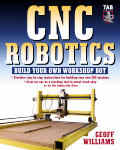 Build your own workshop robot at an affordable price with CNC
Robotics.
Build your own workshop robot at an affordable price with CNC
Robotics. Around the world, scientists and engineers are participating in a
high-stakes race to build the first intelligent robot. Many robots already
exist--automobile factories are full of them. But the new generation of robots will be
something else: smart machines that act like living creatures. When they are brought into
existence, science fiction will have become fact.
Around the world, scientists and engineers are participating in a
high-stakes race to build the first intelligent robot. Many robots already
exist--automobile factories are full of them. But the new generation of robots will be
something else: smart machines that act like living creatures. When they are brought into
existence, science fiction will have become fact. 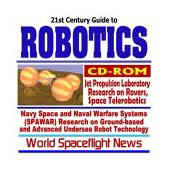 This electronic book
on CD-ROM provides a comprehensive guide to robotic research, focused on the work of the
Jet Propulsion Laboratory and the Navy Space and Naval Warfare Systems (SPAWAR) division.
JPL is NASA's lead center for creating robotic spacecraft and rovers, building smart
machines that can perform complicated tasks millions of miles from home. A prime example
of JPL expertise: Spirit and Opportunity, the twin Mars Rovers which began their
exploration of Mars early in 2004.
This electronic book
on CD-ROM provides a comprehensive guide to robotic research, focused on the work of the
Jet Propulsion Laboratory and the Navy Space and Naval Warfare Systems (SPAWAR) division.
JPL is NASA's lead center for creating robotic spacecraft and rovers, building smart
machines that can perform complicated tasks millions of miles from home. A prime example
of JPL expertise: Spirit and Opportunity, the twin Mars Rovers which began their
exploration of Mars early in 2004.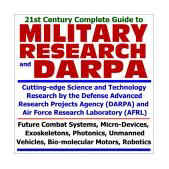 The
full title of this two CD-ROM set is "21st Century Complete Guide to Military
Research and DARPA, Cutting-Edge Science and Technology Research by the Defense Advanced
Research Projects Agency (DARPA) and Air Force Research Laboratory (AFRL) on Future Combat
Systems, Micro-devices, Exoskeletons, Photonics, Unmanned Vehicles, Bio-molecular Motors,
and Robotics"
The
full title of this two CD-ROM set is "21st Century Complete Guide to Military
Research and DARPA, Cutting-Edge Science and Technology Research by the Defense Advanced
Research Projects Agency (DARPA) and Air Force Research Laboratory (AFRL) on Future Combat
Systems, Micro-devices, Exoskeletons, Photonics, Unmanned Vehicles, Bio-molecular Motors,
and Robotics" Robots,
androids, and bionic people pervade popular culture, from classics like
Frankenstein and R.U.R. to modern tales such as The Six Million Dollar Man,
The Terminator, and A.I. Our fascination is obvious - and the technology is
quickly moving from books and films to real life.
Robots,
androids, and bionic people pervade popular culture, from classics like
Frankenstein and R.U.R. to modern tales such as The Six Million Dollar Man,
The Terminator, and A.I. Our fascination is obvious - and the technology is
quickly moving from books and films to real life. 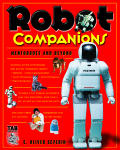 Inside Robot Companions you'll find all the
details, plans, and information you need to make a robot partner part of your daily life,
at a price you can afford. Author E. Oliver Severin, originator of some of the
technologies that make robots friendly, useful, and educational, shows you how to find or
build your own robot helpmate -- either from commercial kits or an assembly of
off-the-shelf parts.
Inside Robot Companions you'll find all the
details, plans, and information you need to make a robot partner part of your daily life,
at a price you can afford. Author E. Oliver Severin, originator of some of the
technologies that make robots friendly, useful, and educational, shows you how to find or
build your own robot helpmate -- either from commercial kits or an assembly of
off-the-shelf parts.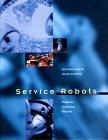 This beautifully illustrated book provides an overview of the
developments in the use of robots in the service industry worldwide.
This beautifully illustrated book provides an overview of the
developments in the use of robots in the service industry worldwide.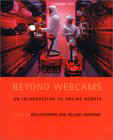 Remote-controlled robots were first developed in the 1940s to
handle radioactive materials. Trained experts now use them to explore deep in sea and
space, to defuse bombs, and to clean up hazardous spills. Today robots can be controlled
by anyone on the Internet. Such robots include cameras that not only allow us to look, but
also go beyond Webcams: they enable us to control the telerobots' movements and actions.
Remote-controlled robots were first developed in the 1940s to
handle radioactive materials. Trained experts now use them to explore deep in sea and
space, to defuse bombs, and to clean up hazardous spills. Today robots can be controlled
by anyone on the Internet. Such robots include cameras that not only allow us to look, but
also go beyond Webcams: they enable us to control the telerobots' movements and actions.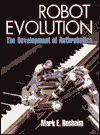 A lavishly illustrated, nonmathematical guide to robotic
mechanical devices. Robot Evolution : The Development of Anthrobotics is both a
comprehensive history of human-like robots, and a technical guide to robot
design. You'll find
A lavishly illustrated, nonmathematical guide to robotic
mechanical devices. Robot Evolution : The Development of Anthrobotics is both a
comprehensive history of human-like robots, and a technical guide to robot
design. You'll find  This book surveys the history of intelligent vehicles,
discusses some of the different approaches developed worldwide by a large number of
research institutions, and presents the solutions adopted by the University of Parma in
the ARGO Project. The book illustrates the problem, proposes some of the different
solutions, and details the design, development, and engineering of a hardware and software
platform for automatic vehicle guidance, as well as the set-up of two prototype vehicles.
This book surveys the history of intelligent vehicles,
discusses some of the different approaches developed worldwide by a large number of
research institutions, and presents the solutions adopted by the University of Parma in
the ARGO Project. The book illustrates the problem, proposes some of the different
solutions, and details the design, development, and engineering of a hardware and software
platform for automatic vehicle guidance, as well as the set-up of two prototype vehicles.